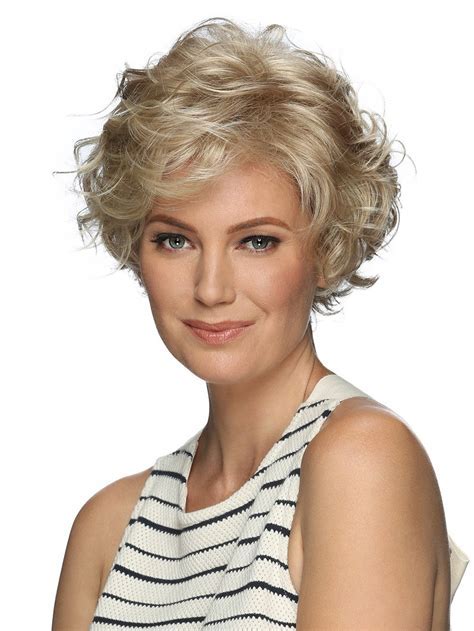Introduction
Wigs have become an integral part of fashion and beauty, offering endless possibilities for transforming your look. For white women, the right wig can enhance your natural features, add volume and length, or provide a whole new style. With an overwhelming array of options available, finding the perfect wig can be a daunting task. This comprehensive guide will empower you with all the information you need to choose the best wig for your individual needs.

Chapter 1: Types of Wigs
1. Lace Front Wigs:
- Natural-looking with a sheer lace front that blends seamlessly with your hairline.
- Allows for versatile styling and customization.
- Prices range from $150 to $1,000+.
2. Full Lace Wigs:
- Most realistic and comfortable option, with a full lace cap that covers the entire head.
- Requires professional installation and maintenance.
- Can cost anywhere from $500 to $2,000+.
3. Machine-Made Wigs:
- Constructed on a machine, resulting in a sturdier and less breathable cap.
- Usually less expensive than lace wigs, ranging from $50 to $200.
- Limited styling options due to the fixed cap construction.
Chapter 2: Hair Materials
1. Human Hair Wigs:
- Made from real human hair, offering the most natural look and feel.
- Requires regular care and styling to maintain its quality.
- Can be expensive, with prices starting from $300 and going up to thousands of dollars.
2. Synthetic Hair Wigs:
- Constructed from man-made fibers, providing a more affordable option.
- Heat-resistant and easy to style, but may not look as natural as human hair.
- Can be found for as low as $20 to $100+.
3. Heat-Friendly Synthetic Wigs:
- A hybrid option that combines human hair with synthetic fibers.
- Offers natural-looking results while still being heat-stylable.
- Prices vary depending on the blend of materials.
Chapter 3: Cap Construction
1. Monofilament Caps:
- Thin, breathable caps that create the illusion of natural hair growth.
- Allow for heat styling and parting anywhere on the head.
- Can be more expensive than other cap constructions.
2. Weft Caps:
- Constructed with horizontal wefts of hair sewn onto the cap.
- Provide a sturdy and durable base, but may be less breathable than other options.
- Typically less expensive than monofilament caps.
3. Open Caps:
- Feature a mesh or elastic top that allows air circulation.
- Ideal for those with sensitive scalps or who experience excessive sweating.
- May not provide the most secure fit and can be prone to slipping.
Chapter 4: Choosing the Right Wig
1. Hair Length and Density:
- Determine the desired length and thickness of your wig based on your face shape and personal preferences.
- Density refers to the amount of hair on the wig, with higher density providing more volume.
2. Hair Color and Texture:
- Find a wig color that complements your skin tone and facial features.
- Choose a texture that matches your natural hair or opt for a different style to create a bolder look.
3. Face Shape:
- Round faces: Longer, layered wigs with side bangs to add height and balance.
- Oval faces: Can wear almost any wig style, but avoid wigs that are too short or tightly fitted.
- Heart-shaped faces: Wigs with volume at the crown and chin-length layers to narrow the forehead.
- Square faces: Wigs with a side part and soft, flowing layers to soften the angles.
Chapter 5: Wig Care and Maintenance
1. Washing and Conditioning:
- Human hair wigs: Wash with sulfate-free shampoo and conditioner, using cool water.
- Synthetic hair wigs: Use a mild shampoo and do not condition.
2. Styling:
- Use heat-styling tools sparingly on synthetic wigs.
- Braid or pin up your wig at night to maintain its shape.
3. Storage:
- Store your wig on a wig stand or in its original packaging when not in use.
- Avoid storing your wig in direct sunlight or near heat sources.
Table 1: Wig Types at a Glance
| Wig Type | Cap | Hair Material | Cost | Pros | Cons |
|---|---|---|---|---|---|
| Lace Front | Lace | Human or Synthetic | $150+ | Natural-looking, Versatile | Expensive, Requires Maintenance |
| Full Lace | Lace | Human or Synthetic | $500+ | Most Realistic, Comfortable | Expensive, Requires Professional Installation |
| Machine-Made | Machine | Synthetic | $50+ | Affordable, Easy to Style | Less Breathable, Limited Styling |
Table 2: Hair Materials Comparison
| Material | Natural Appearance | Maintenance | Cost |
|---|---|---|---|
| Human Hair | Most Natural | Requires Regular Care | Expensive |
| Synthetic Hair | Less Natural | Low Maintenance | Affordable |
| Heat-Friendly Synthetic | Between Human and Synthetic | Moderate Maintenance | Varies |
Table 3: Cap Construction Options
| Cap Type | Breathability | Security | Cost |
|---|---|---|---|
| Monofilament | High | Moderate | High |
| Weft | Medium | High | Low-Medium |
| Open | High | Low | Low |
Table 4: Common Wig Mistakes and Solutions
| Mistake | Solution |
|---|---|
| Choosing the Wrong Cap Size | Measure your head circumference and refer to the wig’s measurements. |
| Over-Styling | Use heat-styling tools sparingly and avoid over-brushing. |
| Not Cleaning Regularly | Wash your wig according to the manufacturer’s instructions to prevent tangles and build-up. |
| Storing Improperly | Store your wig on a wig stand or in its original packaging when not in use. |
Conclusion
Choosing the perfect wig for white women is a journey that requires careful consideration of your preferences, needs, and budget. By understanding the different types of wigs, hair materials, and cap constructions, you can make an informed decision that enhances your beauty and boosts your confidence. Remember, with proper care and maintenance, your wig can become a treasured accessory that empowers you to express your individuality and embrace a new level of style.
